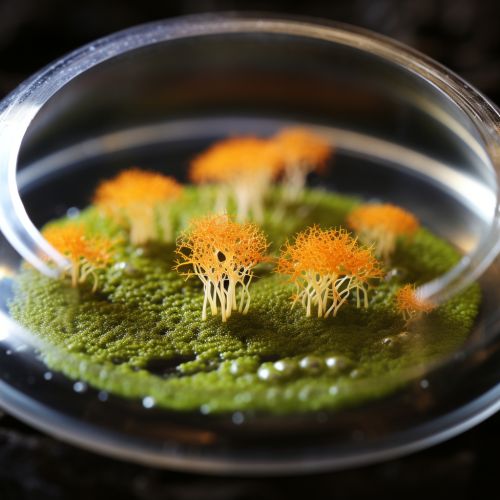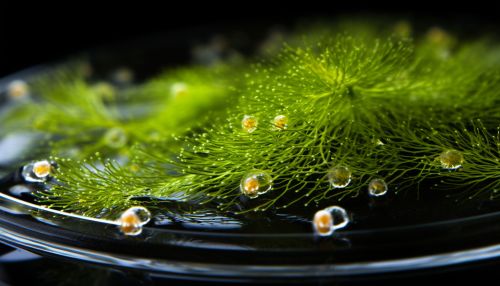Aspergillus flavus
Introduction
Aspergillus flavus is a saprophytic and pathogenic fungus with a cosmopolitan distribution. It is known for its production of aflatoxin, a potent carcinogen. This fungus is common in soil and decaying vegetation, and it often invades crops and stored food products. It is also an opportunistic human and animal pathogen, causing aspergillosis in immunocompromised individuals.


Taxonomy and Morphology
Aspergillus flavus belongs to the Aspergillus genus, which is comprised of several hundred species. This genus is part of the Aspergillaceae family, within the order Eurotiales, class Eurotiomycetes, phylum Ascomycota, and kingdom Fungi.
In terms of morphology, A. flavus produces conidiophores that are uncolored to pale brown, rough-walled, and biseriate. The conidia are typically globose to subglobose, finely roughened, and a dull green color. The sclerotia of A. flavus are usually large and can range in color from white to dark brown.
Ecology and Distribution
Aspergillus flavus is a cosmopolitan fungus, meaning it is found worldwide. It is commonly present in soil and decaying organic matter, such as plant debris. It is also frequently found in stored food products and animal feeds. A. flavus has a high tolerance for heat and drought conditions, which allows it to thrive in various environments.
Pathogenicity and Health Effects
Aspergillus flavus is an opportunistic pathogen in humans and animals. It can cause a disease known as aspergillosis, which can manifest in several forms, including invasive pulmonary aspergillosis, chronic pulmonary aspergillosis, and allergic bronchopulmonary aspergillosis.
One of the major health risks associated with A. flavus is the production of aflatoxins, which are potent carcinogens. Aflatoxins can contaminate a variety of crops, including corn, peanuts, and tree nuts, and pose a significant risk to human and animal health when ingested.
Aflatoxin Production
Aflatoxins are secondary metabolites produced by Aspergillus flavus and a few other Aspergillus species. They are among the most potent naturally occurring carcinogens known and are classified as Group 1 carcinogens by the International Agency for Research on Cancer.
Control and Prevention
Efforts to control Aspergillus flavus and reduce aflatoxin contamination in crops involve a combination of pre-harvest, harvest, and post-harvest strategies. These include crop rotation, use of resistant crop varieties, proper irrigation and fertilization practices, timely harvesting, and proper storage conditions.
